#Maria Leopoldine of Austria
Photo
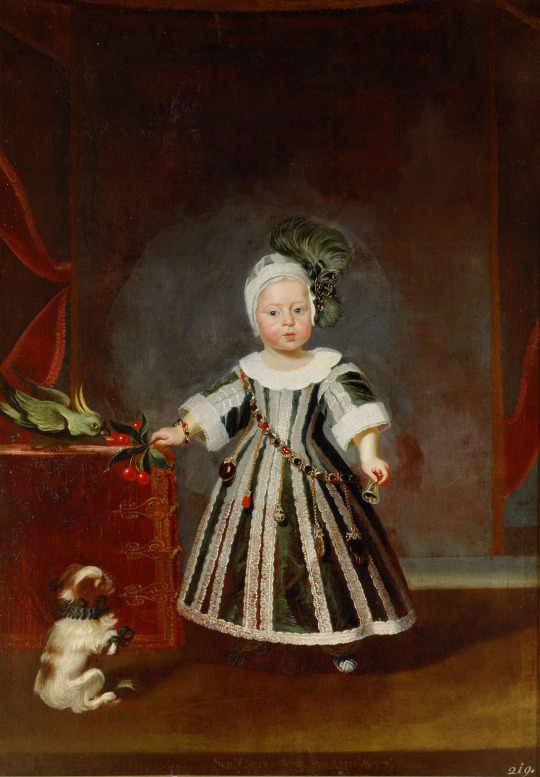
Archduke Charles Joseph with a puppy and a cockatoo at the age of about one and a half.
He was the only son of Ferdinand III and his second wife, Maria Leopoldine of Austria.
His mother died giving birth to him at the age of 17, and Charles Joseph himself died young as well at the age of 14.
#archduke charles joseph#house of habsburg#ferdinand iii#maria leopoldine of austria#habsburg#austria#archduke#long live the queue
20 notes
·
View notes
Photo



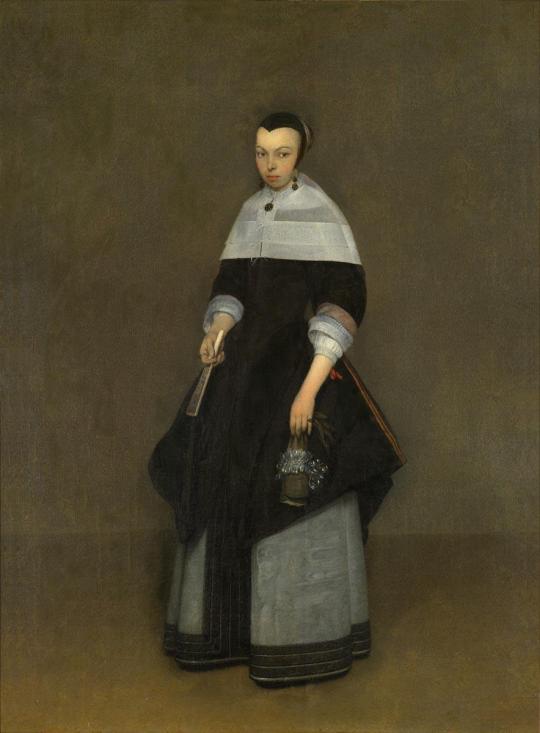

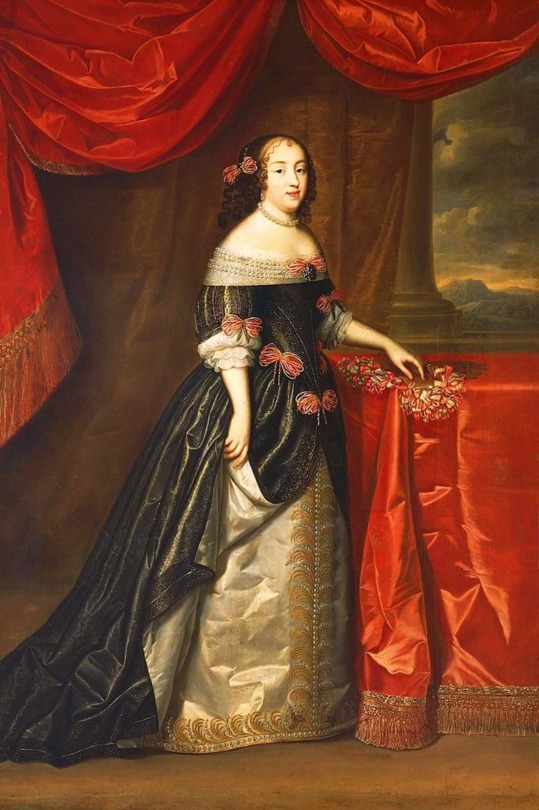

Baroque era dress (from top to bottom) -
Maria Leopoldine of Austria, Holy Roman Empress, 1632-1649 by Justus Sustermans (location ?). From tumblr.com/blog/view/catherinedefrance; erased spots & cracks w Pshop 2048X2579 @72 1.8Mj.
1655 Anna María Luisa de Orléans by Charles Beaubrun and Henri Beaubrun (Prado). From tumblr.com/blog/view/roehenstart; removed obvious spots & flaws in background w Pshop 1502X1858 @72 976kj.
Young aristocrat by Joachim von Sandrart (Hampel - 30Jun22 auction Lot 338). From invaluable.com-auction-lot-joachim-von-sandrart-1606-frankfurt-am-main-1688--338-c-35f4b3f83e 1330X1696 @72 3.2Mp 1330X1696 @72 3.2Mp.
1661 Lady by Gerard ter Borch (State Pushkin Museum of Fine Arts - Moskva, Russia). From tumblr.com/blog/view/shewhoworshipscarlin 884X1200 @72 205kj.
Marie Therese, Queen of France (1638-1683) attributed to Jean Nocret (Hermitage Fine Art - 8Jul20 auction Lot 573). From invaluable.com/auction-lot/jean-nocret-1615-1672-attributed-to-marie-therese-573-c-aa342d1aff 1000X1361 @72 231kj.
Marguerite Louise d'Orléans, Grand Duchess of Tuscany (1645-1721) by Henri and Charles Beaubrun (location ?). From tumblr.com/blog/view/roehenstart 1064X1600 @72 358kj.
ca. 1672-1675 Maria Isabella Capranica Cerri by Jacob Ferdinand Voet (Palazzo Chigi - Roma, Italy). From tumblr.com/blog/view/history-of-fashion; erased spots w Pshop 480X612 @72 107kj.
#Baroque fashion#Louis XIV fashion#1650s fashion#1660s fashion#1770s fashion#Maria Leopoldine of Austria#Justus Sustermans#Anna María Luisa de Orléans#Beaubrun#Beaubrun brothers#Joachim von Sandrart#Gerard ter Borch#Queen Marie Therese#Jean Nocret#Marguerite Louise d'Orléans#Maria Isabella Capranica Cerri#Jacob Ferdinand Voet#straight hair side curl coiffure#collar#bertha#lace bertha#hair ribbons#V waistline#full skirt.
13 notes
·
View notes
Text
Maria Leopoldine of Austria-Este
@microcosme11 had asked me about this lady of the Bavarian court:

Her name is Maria Leopoldine von Österreich-Este, and she played a huge role in making sure that Max Joseph, Eugène‘s future father-in-law, inherited the title of Elector of Bavaria. As a matter of fact, it‘s a highly educating tale of how to become elector in Munich in the first place.
Unfortunately, it will need a lot of explanation, as this takes us deeply into the rivalries and century-old feuds between the different German principalities that Napoleon Bonaparte would soon know to exploit so well. Let‘s just say, Habsburg (Austria) and Wittelsbach (Bavaria) had not seen eye to eye for quite some time when the Bavarian branch of House Wittelsbach, the one holding the position of Bavarian elector, was about to go extinct.
Many branches of the family went extinct around that time, in fact, and not only of this family. Be it that centuries of inbreeding finally took their toll, be it a general unwillingness to do more than the bare minimum to ensure the family had an appropriate heir (»No, no, no. We‘ve done our duty, we‘ve had one son. It‘s not our fault he died. We‘re not doing that again!«) or even to marry an appropriate but not necessarily attractive partner with whom you could have children able to inherit – the number of males in those princely families got rather low during the 18th century.

In 1777 – twelve years before the French Revolution, just for context – Maximilian Joseph III, the last elector from the old Bavarian branch of the Wittelsbach family, died without a son. There were of course more branches of the family, most importantly the branch that held the electorate of the Palatinate, and then some less important, not ruling branches, like the Zweibrücken-Birkenfelds. Now, technically, if a German prince died without an heir, things would get all medieval: the liege – the Bavarian electorate, in this case - would fall back to the liege lord. The emperor.
The Habsburg emperor in Vienna! No f-ing way!
... said not only the Bavarians but also the kings of France and Prussia, who had no interest in Austria gaining that much territory. In order to prevent it from happening, the different Wittelsbach branches in a multitude of »house contracts« had declared several years before that the family branches would all inherit from each other if one went extinct. The Austrians might have protested against that arrangement but they had just done something quite similar in order to ensure that the last emperor‘s daughter Maria Theresia could inherit, so they were in a bad position to argue. Which doesn‘t mean they didn‘t. But after some more bad blood, even a »War of the Bavarian Succession« that is a funny story in itself, things settled down, and a guy named Karl Theodor (Charles Theodore) became elector of both Bavaria and the Palatinate.

There was a huge down-side to this advancement, from his perspective: he had to move to Bavaria. Uncivilised, almost medieval, hilly-billy Bavaria. He hated that place, and for good reasons. He was a very cultivated person, and this was a very uncultivated place (according to some, it still is *coughcough*). The Bavarians, as to them, liked this new guy in Munich about as much as he liked them. And another problem was already looming on the horizon: Karl Theodor had plenty of children – but only one son with his wife, and this son happened to die a day after he was born. Apparently this was one of those cases where the spouses thought once had been enough and refused to give it another try. And Karl Theodor could not even marry somebody else because – catholic. No divorce. And his unloved wife was in good health. To sum up: No immediate heir in this family either.
Which brings us to the Zweibrücken family branch. At the time when Karl Theodor moved to Munich, this branch of the Wittelsbach family consisted of two brothers: Karl August and Maximilian Joseph (yes, that‘s our Max, future king of Bavaria). Their father, Friedrich Michael, had died young as a military officer in French service, so they had grown up at the court of their uncle, Friedrich Michael‘s older brother Christian. Christian – just saying – had simply refused to marry a partner of equal birth and instead conducted a morganatic marriage with a French actress. A very happy one, by the way. The burden to ensure the family would continue thus had fallen to Friedrich Michael, who had married a sister of Karl Theodor‘s wife, had made her four kids (two sons, two daughters) and bedded pretty much every willing lady of the French court before accusing his wife of adultery, locking her up in some monastery (Max Joseph probably saw his mother last when he was three years old), and then getting himself killed in some war or other.
By 1778, both Friedrich Michael and Christian were dead, and as Christian‘s many children could not inherit his titles, Karl August had become Count Palatine of Zweibrücken (Deux-Ponts in French). Due to his »uncle« Karl Theodor‘s lack of a legitimate son, he and his younger brother Max Joseph also were the next heirs to the combined Bavarian and Palatine electorate.

(Karl August, older brother to future king Max Joseph)
Meanwhile in Munich, Karl Theodor really got annoyed with this gruesome country he had been forced to move into. However, for the first time in a long while this was a Bavarian elector who had good relations with the Habsburgs. After some negotiations between Munich and Vienna Karl Theodor and emperor Joseph II came up with a plan that would make everybody happy: Karl Theodor would exchange the Bavarian territory (or some portion of it) for the Austrian Netherlands. Austria would finally add Bavaria to its territory, and Karl Theodor could move to a nicer place.
This caused an uproar among the Bavarian population. Becoming Austrians? Never! - The Bavarian estates sent delegation after delegation to the Zweibrücken nephews with desperate pleas for help (they also paid these nephews‘ debts). Karl August and Max Joseph immediately protested against the plan, and it turned out that according to the fineprint in those house contracts mentioned above Karl Theodor could not make the deal with Vienna without his nephews‘ consent. Bummer.
France and Prussia also put a word in, and France did even more: When Karl August‘s only son (yet another only child) died in 1784, with little chance for a legitimate replacement, the French king personally made sure that Max Joseph, the younger brother, a great womanizer and obstinate bachelor, would get married to an appropriate lady who could give birth to many legitimate heirs of the Bavarian electorate (oh, and Louis also paid Max Joseph‘s debts. That‘s a recurring theme in the story). Max Joseph, after lots of wailing and resisting, was finally dragged in front of the altar in 1785 and, to his great surprise, found that he loved marriage life, family and children. Not necessarily enough to give up on his womanizing ways. But this whole family thing, having kids and stuff? That was also kinda fun.

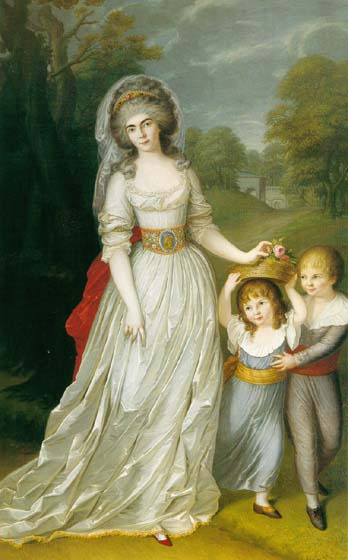
(Max Joseph’s first wife Auguste Wilhelmine and their two oldest children, crown prince Ludwig and - yes, that’s little Auguste)
Let‘s fast forward a little: The French Revolution breaks out. Max Joseph, so far one of the many foreign princes in French service, looses everything and, with a wife and five children, becomes a refugee. For some time, so does his brother. Then over the next years, many people die: Max‘s first wife (he will quickly remarry), one of his daughters - and his brother Karl August. Making Max Joseph the heir apparent to the electorate of the Palatinate and of Bavaria.
Except that, in 1794, one more person died: Elector Karl Theodor‘s wife. The Austrians acted quickly and offered the mourning widower (who had 70 years of age) an archduchess as new bride in order to produce an heir with, just so Bavaria would not fall into the clutches of this former French colonel Max Joseph von Zweibrücken who was very unlikely to make any similar deals with the Habsburgs.
And now we finally can introduce the lady this is all about:

Maria Leopoldine was the daughter of Ferdinand Karl von Österreich-Este, who in turn was one of the many children of Maria Theresia (i.e. a brother to the emperors Joseph and Leopold and queens Marie Antoinette and Maria Carolina of Naples) and ruled in Milan. (A year after Maria Leopoldine had married, her family would be kicked out of their home by one Napoleon Bonaparte and his army of Italy). She was 19 years old when she was ordered to marry 70-year-old elector Karl Theodor, and a young lady with lots of self-esteem. Allegedly, when she first saw the bridegroom‘s portrait, she exclaimed: »Thank god he‘s already that old!« - Obviously, it was love on first sight.
The marriage life of the happy newly-weds turned out to be just as full of harmony and roses as could be expected: Maria Leopoldine locked her bedroom door. Well, at least for her husband. Not so much for anybody else. And to make matters worse, her new »nephew« Max Joseph showed up in Munich, as he did from time to time. Just to remind Karl Theodor who was his heir probably, but this time ostensibly to pay his homage to the new aunt Maria Leopoldine. According to a story crown prince Ludwig was told much later, Max Joseph was quite thorough about this task and, unlike his uncle, did make it into Maria Leopoldine‘s bedroom. Did I mention Max never quite gave up on his womanizing ways?
In any case, Maria Lepoldine had made up her mind: She very much preferred the nephew over her husband, thank you for asking. If there was anything she could do to ensure the Austrians (that is, her own Habsburg family!) would not receive Bavaria, she would do it.
Turns out, she could do a lot.
Fast forward to 1799. Karl Theodor suffers from a stroke while playing cards. It‘s not his first, but this one is serious. The old elector still breathes, but the doctors are agreed there‘s nothing they can do. It‘s just a matter of time now.
Time that the Austrian ambassadors in Munich want to use. Contracts for an exchange or sale of Bavarian territory to Austria have long been drawn up, all they need is the elector‘s signature! Surely now, in his last hours, Karl Theodor will not hesitate any longer? They enter the Munich Residence, talk or bribe their way into the private rooms of the elector’s family, into the elector‘s rooms, to his bedroom - and then there‘s somebody on the doorstep. Maria Leopoldine.
And. She. Will. Not. Move. - Forget Gandalf against the Balrog of Moria. Maria Leopoldine against the Habsburg ambassador was the real thing. In the end, the Austrians, most likely after lots of cursing and footstomping, had to leave. In case they hoped they would be luckier at another occasion, they were disappointed: For the first time during their marriage, Maria Leopoldine focused solely on her husband and gave him all her attention, until he breathed his last.
At which point she had all gates of Munich locked. All Austrian couriers on their way to inform Vienna were turned back. The only dispatch that did go out was one to Max Joseph, in which Maria Leopoldine declared herself Max‘s devoted subject and invited him to come to Munich and take over power as soon as possible.
Which Max did. Not necessarily as quickly and forcefully as Maria Leopoldine had acted. But it sufficed.
There was one more point in which Maria Leopoldine helped Max a lot. After her husband‘s death, state officials in the presence of the Austrian ambassador had an interview with her, inquiring if Maria Leopoldine happened to be pregnant. Because a son by Karl Theodor, even posthumously born, would have inherited before Max Joseph. She answered »No«.
Now, as chance would have it, some months later, she went on a lengthy journey that we are very badly informed about, and only returned a year later, after most likely having given birth to a child somewhere on the way. A child whose father surely had not been Karl Theodor. But the Austrians probably would not have cared.
Maria Leopoldine stayed in Munich, much beloved by Max Joseph, and became the enfant terrible of his court, had lovers in abundance, excelled at investing her money, at some point bought a farm where she, if need be, personally helped with the hay-making, and even married morganatically (possibly so she had an official father for her children). She was a close friend of Eugène but not so much of his wife. Maybe she never quite forgave Auguste that her arranged marriage had turned out so well when her own had been such a disaster.

(Maria Leopoldine in later years, with her two sons)
#Maria Leopoldine of Austria-Este#Bavarian court#Munich#max joseph#charles theodore#habsburg and wittelsbach
26 notes
·
View notes
Photo

Archduchess Maria Leopoldine of Austria-Este (10 December 1776 – 23 June 1848), was an Electress of Bavaria as the second spouse of Charles Theodore, Elector of Bavaria.
#Maria Leopoldine of Austria-Este#House Austria-Este#XVIII century#XIX century#people#portrait#paintings#art#arte
17 notes
·
View notes
Photo

1790s Moritz Kellerhoven - Archduchess Maria Leopoldine of Austria-Este, Electress of Bavaria
(Munich Residenz)
101 notes
·
View notes
Photo
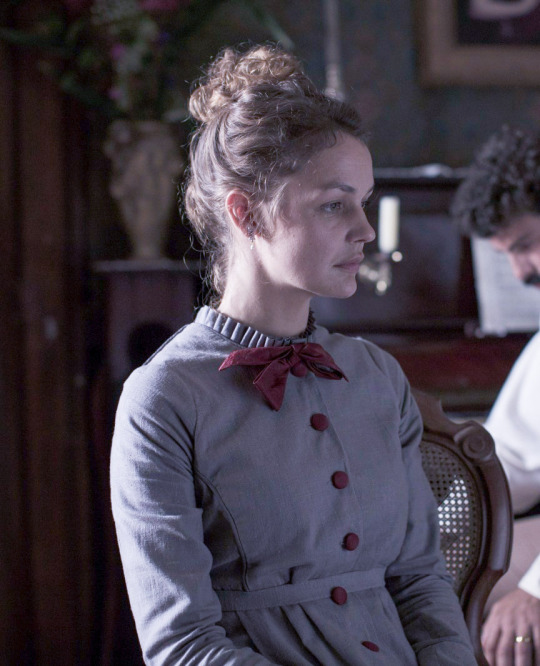

Luise Heyer as Maria Leopoldina of Austria, the Empress Consort of Brazil, Queen Consort of Portugal and Archduchess of Austria
Dona Maria Leopoldina of Austria (22 January 1797 – 11 December 1826) was born Caroline Josepha Leopoldine Franziska Ferdinanda of Habsburg-Lorraine in Vienna, Austria, Holy Roman Empire. She was the daughter of Holy Roman Emperor Franz II and Empress Maria Theresa of Naples and Sicily. In 1817 the Archduchess married Prince Dom Pedro of Braganza (12 October 1798 – 24 September 1834), heir to Portugal, later the Emperor Dom Pedro I of Brazil and King Dom Pedro IV of Portugal. The couple had 7 children: Queen Maria II of Portugal, Miguel, Prince of Beira, João Carlos, Prince of Beira, Princess Januária of Brazil, Princess Paula of Brazil, Princess Francisca of Brazil and Emperor Dom Pedro II of Brazil. On September 2, 1822 while she was the Acting Princess Regent of the Kingdom of Brazil in the absence of her husband Maria Leopoldina signed the Decree of Independence, declaring Brazil separate from Portugal. She died at age 29 in 1826 after a miscarriage. As Acting Regent Maria Leopoldina was the first woman to govern an independent Brazil, the first empress consort of the country, the first empress of the Americas and the first woman to govern an independent American country.
Victoria Guerra as Amélia of Leuchtenberg, the Empress Consort of Brazil and Duchess of Braganza
Dona Amélia of Leuchtenberg (31 July 1812 – 26 January 1873) was born Amélie Auguste Eugénie Napoléonne de Leuchtenberg in Milan, Kingdom of Italy. She was the daughter of Eugène de Beauharnais, Duke of Leuchtenberg and Princess Augusta of Bavaria, Duchess of Leuchtenberg. She was the second wife of Emperor Dom Pedro I of Brazil after their marriage in 1829 and they had one child, the Princess Maria Amélia of Brazil. After Dom Pedro I abdicated the Brazilian crown, Amélia accompanied her husband back to Europe. They held the titles of Duke and Duchess of Braganza until Pedro’s dead in 1834. Amélia died in Lisbon at the age of 60 in 1873.
A VIAGEM DE PEDRO | PEDRO, BETWEEN THE DEVIL AND THE DEEP BLUE SEA (2021). Dir. Laís Bodanzky
#a viagem de pedro#perioddramaedit#filmedit#movieedit#weloveperioddrama#worldcinemaedit#perioddramasource#onlyperioddramas#historicwomendaily#periodedits#braziliansource#cinematv#cinemapix#fyeahmovies#motionpicturesource#filmtv#filmtvdaily#userperioddrama#femaledaily#femalecharacters#flawlessbeautyqueens#historyedit#women in history#period drama#pedro between the devil and the deep blue sea#brazilian cinema#brazilian movies#mine#mine: edit#brazilian stuff
73 notes
·
View notes
Text
Unpopular (?) Opinion:
Maria Leopoldine of Austria deserved A LOT more recognition. She was an amazing empress and i think most people don't even know about her :/
#maria leopoldina of austria#maria leopoldina#she was a freaking badass empress!#and her shitty husband took all the credit >:(#she also had to deal with his shit#maria leopoldine of austria
7 notes
·
View notes
Photo
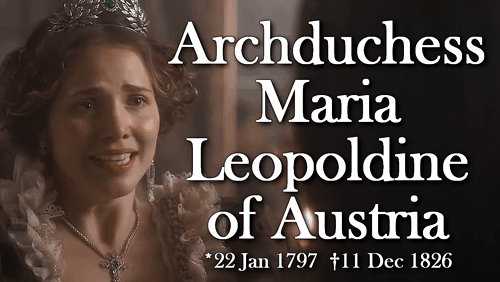



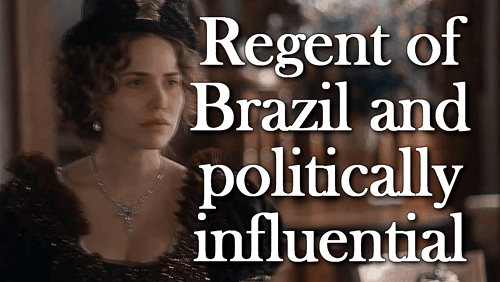





House of Habsburg & of Braganza: Archduchess Maria Leopoldine (Leopoldina) of Austria
Leopoldine Josepha Carolina was born as fifth child and fourth daughter to Holy Roman Emperor Francis II and his second wife Princess Maria Theresa of Naples and Sicily. Her mother died when she was ten but she formed a close relationship with her stepmother Archduchess Maria Ludovika of Austria-Este, Princess of Moden, who her father married only a year after his second wife’s death. Only when she sailed to Brazil, Leopoldine would begin to use the name of Maria Leopoldina.
Leopoldine was raised with her sisters. She studied the typical subjects for Habsburg woman: French, Italian, drawing, playing the piano, riding and shooting. Leopoldine was especially interested in science, most of all botany and mineralogy.
On May 13th, 1817, Leopoldine was married by proxy to the then Prince Pedro of Portugal, who resided in Brazil, in Vienna. Exactly three months later her ship set sail and arrived 81 days later, on November 5th, Rio de Janeiro. Here she met her husband for the very first time. But he was not the fairytale prince she had imagined. At the age of only 18, he had had already several affairs and lived with his French marriage in a quasi-marital situation. However, their marriage would produce nine pregnancies of which 7 were carried to term. Among their children were two monarchs.
However, Leopoldina was influential in the matter of politics. Unlike her, Pedro was also not a very educated man and relied heavily on her advice. He discussed every decision with her up until the indepence of Brazil. Pedro had become Prince-Regent of Brazil in 1821 when his father had to return to Portugal to strengthen his power there. In January 1822, during a expedition to Sao Paulo, a letter reached Pedro from Leopoldina, who he had left behind in Rio de Janeiro as regent in his absence. She advised him to declare Brazil’s independency from Portugal. And he did. They were crowned the first Emperor and Empress of Brazil on December 1st, 1822.
Unfortunately their marriage soon turned sour and abusive. Pedro continued to have affairs and one of them, Domitila de Castro, even bore him a daughter he demanded to be raised alongside his legitimate children. To embarrass Leopoldina, Pedro made Domitila the highest-ranking lady-in-waiting of his wife and gave her the title of Marchioness of Santos. The couples disagreements turned from psychologial to physical. Pretty soon Pedro began to beat his wife. His humiliations at court pushed Leopoldina in too a severe depression.
Maria Leopoldina was pregnant again when she had another fight with her husband on December 1st, 1826. Supposedly, he kicked her so strongly in the stomach that she went into premature labor. Only ten days later, the not yet 30-year-old Empress was dead.
// Letízia Colin as Leopoldina in Novo Mundo (2017)
____________________________________________________________
Requested by @elizabethbennetz
#historic women#historyedit#Novo Mundo#period drama#perioddramaedit#Maria Leopoldina of Austria#Empress Maria Leopoldina of Brazil#women in history#House of Habsburg#House of Habsburg-Lorraine#Maria Leopoldine of Austria#House of Braganza#1800s#19th century#Brazilian history#Latin American history#Austrian history#European history#Royal Women of Austria#queens of the iberian peninsula#requests
343 notes
·
View notes
Photo

Maria Leopoldine of Austria, Holy Roman Empress (6 April 1632 - 7 August 1649)
#maria leopoldine of austria#holy roman empress#daughter of leopold v archduke of austria#wife of ferdinand iii holy roman emperor#history#women in history#17th century
7 notes
·
View notes
Text
TERESA CRISTINA & PEDRO II
The Royal Wedding of a Princess of the Two Sicilies and the Emperor of Brazil
(married 1843)

pictured above is a portrait of the Emperor and Empress of Brazil, from 1843
-------------------- ~ -------------------- ~ --------------------
SERIES - On this day September Edition: Teresa Cristina and Pedro were married on 4 September 1843.
-------------------- ~ -------------------- ~ --------------------
TERESA CRISTINA MARIA GIUSEPPA GASPARE BALDASSARRE MELCHIORE GENNARA FRANCESCA DA PAOLA DONATA BONOSA ANDREA D'AVELLINO RITA LUITGARDA GELTRUDA VENANZIA TADDEA SPIRIDIONE ROCCA MATILDE was the youngest daughter of Francesco I, King of the Two Sicilies and his second wife Infanta María Isabel of Spain. She was a member of the HOUSE OF BOURBON-TWO SICILIES and was from her birth in 1822 a PRINCESS OF THE TWO SICILIES.
PEDRO DE ALCÂNTARA JOÃO CARLOS LEOPOLDO SALVADOR BIBIANO FRANCISCO XAVIER DE PAULA LEOCÁDIO MIGUEL GABRIEL RAFAEL GONZAGA was the third son of Pedro I, Emperor of Brazil and his first wife Archduchess Maria Leopoldine of Austria. He was a member of the Brazilian branch of the HOUSE OF BRAGANZA and had been PEDRO II, the EMPEROR OF BRAZIL since his father's abdication in 1831.
When the Emperor was coming of age the Regency Council sought to find a wife for him. And when Ferdinando II, King of the Two Sicilies heard of the news he proposed his sister's hand and a portrait of the Princess was sent to Brazil.
The Council convinced the Emperor to accept the offer and they were married by proxy on 30 May 1843, in Naples, in a ceremony where one of the Princess' older brothers Leopoldo, Count of Syracuse represented the Emperor.

pictured above is a painting of the proxy wedding ceremony of the Princess of the Two Sicilies and the Emperor of Brazil (represented by the Count of Syracuse), by Alessandro Ciccarelli from 1846
After their wedding by proxy the new EMPRESS CONSORT OF BRAZIL sailed to Brazil, arriving at the Imperial capital Rio de Janeiro in September 1843.
On her arrival the Emperor rushed to meet her in her ship but was disappointed with her appearance. Although feeling deceived they were married the next day, on 4 September 1843, in a lavish religious ceremony at the Royal Chapel, in Rio de Janeiro.
They had four children (check the list below), two boys and two girls. However both their sons died young leaving their eldest daughter Princess Isabel as heir to the Imperial throne.
It was certain not a love marriage but they managed to live in good terms, besides the Emperor having had affairs with other women.
In November 1889 a military coup proclaimed the Republic of Brazil and the Monarchy was abolished. Two days later the Imperial Family was forced to flee into exile to Europe, arriving in Portugal by December 1889.
At the time of their arrival, Lisbon was being prepared for the acclamation of Carlos I, the new King of Portugal, a grandnephew of the former Emperor of Brazil, so they left to Oporto.
By the end of December 1889 the Provisional Government of Brazil passed a law banishing all members of the former Imperial Family to ever set foot in Brazil.
This news shattered the former Empress of Brazil, who was already sick, and she died on 28 December 1889.
-------------------- ~ -------------------- ~ --------------------
Following her death the former Emperor moved to Paris and died there in 1891, almost two years later. He never remarried.
-------------------- ~ -------------------- ~ --------------------
Because of the Banishment Law their descendants were not allowed to return to Brazil until 1920, when the law was revoked.
-------------------- ~ -------------------- ~ --------------------
TERESA CRISTINA and PEDRO II had four children...
Afonso, Prince Imperial of Brazil - died aged two;
Isabel, Princess Imperial of Brazil - wife of Gaston, Count of Eu;
Princess Leopoldina of Brazil - wife of Prince Ludwig August of Saxe-Coburg and Gotha; and
Pedro Afonso, Prince Imperial of Brazil - died aged seventeen months.

pictured above is a family portrait of the Brazilian Imperial Family depicting the Emperor and Empress of Brazil with their two surviving children Princess Leopoldina and the Princess Imperial, by François-René Moreaux from 1857
-------------------- ~ -------------------- ~ --------------------
Check my post about TERESA CRISTINA's mother!
Her mother was María Isabel, an Infanta of Spain from her birth in 1789.
#teresa cristina of bourbon two sicilies#princess of the two sicilies#pedro ii#dom pedro ii#emperor pedro ii#emperor of brazil#empire of brazil#house of bourbon two sicilies#bourbon two sicilies#house of braganza#braganza#brazilian imperial family#italian royals#brazilian royals#familia imperial brasileira#royals#royalty#monarchies#monarchy#royal wedding#royal history#italian history#european history#brazilian history#latin american history#world history#history#history lover#19th century#history with laura
25 notes
·
View notes
Photo

Maria Leopoldine of Austria, Holy Roman Empress, by Justus Sustermans.
The artist was the court painter of the Medici family, which Leopoldine’s mother Claudia was a part of, and he also painted multiple portraits of Claudia.
#Maria Leopoldine of Austria#Justus Sustermans#17th century#17th century art#house of habsburg#habsburg
42 notes
·
View notes
Photo




Louis XVI period fashions (from top to bottom) -
1776 Princess Maria Antonia von Liechtenstein by Friedrich Oelenhainz (Liechtenstein Collection - probably Wien, Austria). From www.liechtensteincollections.at 2160X1549 @300 1.1 Mj. © LIECHTENSTEIN. The Princely Collections, Vaduz–Vienna.
1776 Princess Maria Leopoldine of Liechtenstein by Friedrich Oelenhainz (Liechtenstein Collection - probably Wien, Austria). From www.liechtensteincollections.at 1160X2160 @300 790kj. © LIECHTENSTEIN. The Princely Collections, Vaduz–Vienna.
Woman playing a harp with a singer and their music instructor by the circle of Marie-Victoire Lemoine (location ?). From tumblr.com/blog/view/jeannepompadour/101829915663; removed flaws & spots w P'shop 1280X1574 @72 656kB.
1788 Marie-Thérèse, princesse de Lamballe by Anton Hickel (Liechtenstein Collection - probably Wien, Austria). From www.liechtensteincollections.at 1406X2160 @300 989kj. © LIECHTENSTEIN. The Princely Collections, Vaduz–Vienna.
2 notes
·
View notes
Text

Archduchess Elisabeth Franziska of Austria (1831-1903). 1890s.
She was born in Ofen (Buda), Hungary, the daughter of Palatine Joseph of Hungary (1776–1847) and his third wife Princess Maria Dorothea of Württemberg.
In 1847 she married Archduke Ferdinand Karl of Austria-Este, Prince of Modena (1821-1849), who died shortly after the birth of their daughter Maria Theresia, who later became the last Bavarian queen. Her husband also came from the House of Habsburg-Lorraine. He was a great-grandson of Empress Maria Theresa via Ferdinand Karl von Österreich-Este (1754-1806).
In 1854 Elisabeth entered into a second marriage with her first cousin Archduke Karl Ferdinand of Austria (1818–1874). The marriage arose under pressure from Archduchess Sophie. The latter noticed that the young emperor Franz Joseph had an eye on Elisabeth. Due to the attempted assassination attempt on her son, the archduchess did not want the Hungarian daughter-in-law and the constant unrest in parts of Hungary. Elisabeth and Karl Ferdinand's marriage was a happy one. Six children emerged from it, four of which survived infancy.
Widowed again in 1874 at the age of 43, Elisabeth received zealous support from her brother-in-law Albrecht when raising her children. This appointed her son Friedrich as the main heir. Elisabeth was the patron of several social institutions. She was very fond of music. Johannes Brahms was invited around 1882 to play rehearsals of his piano quintet in their palace.
She was a maternal grandmother of King Alfonso XIII of Spain.
Through her mother, she was a first cousin of Marie, Queen of Hanover, King William II of Württemberg, Princess Leopoldine of Hohenlohe-Langenburg and Grand Duchess Alexandra Iosifovna of Russia.
Elisabeth's youngest sister was Marie Henriette, Queen consort of the Belgians.
"Do you like her? Me neither". In this unpromising way, King Alfonso XII addressed his trusted man Pepe Osorio after meeting his future wife Archduchess Maria Christina for the first time. And then he blurted out, "You must have noticed that the one who's the bomb is my mother-in-law." They had come to the French town of Arcachon on August 22, 1879 to see in person if his fiancée repelled him or could bear the marriage. Judging by his words, Archduchess Maria Christina did not arouse much enthusiasm in him - she was not his type; Alfonso liked brunettes, round-faced and voluptuos, and Maria Christina was blond and slender - but the young woman seemed pleasant enough to continue with the state wedding project".
Photograph by F. Schiller.
13 notes
·
View notes
Photo

Maria Leopoldine of Austria-Tyrol (6 April 1632 – 7 August 1649), was by birth Archduchess of Austria and member of the Tyrolese branch of the House of Habsburg and by marriage the second spouse of her first cousin, Holy Roman Emperor Ferdinand III. As such, she was Empress of the Holy Roman Empire, German Queen and Queen consort of Hungary and Bohemia. She died in childbirth.
#Maria Leopoldine of Austria-Tyrol#Maria Leopoldine of Austria#House Habsburg#XVII century#people#portrait#paintings#art#arte
2 notes
·
View notes
Text
King Pedro V’s 5th sibling: Infanta Maria Ana de Portugal

Born: 21st August 1843 Necessidades Palace, Lisbon, Portugal
Died: 5th February 1884 (aged 40) Dresden, Saxony
Infanta Maria Ana of Portugal (Maria Ana Fernanda Leopoldina Micaela Rafaela Gabriela Carlota Antónia Júlia Vitória Praxedes Francisca de Assis Gonzaga) (21st August 1843 – 5th February 1884) was a Portuguese infanta (princess), the eldest surviving daughter of Queen Maria II of Portugal and her King consort Fernando II of Portugal, a member of the House of Bragança.
After her mother's death in 1853, when Maria Ana was just ten years old, she became the leading lady of the court, until her older brother, King Pedro V of Portugal, married Princess Stephanie of Hohenzollern-Sigmaringen,

in 1858. Although in the early stages of their acquaintance the two sisters-in-law had a good relationship, in a letter written in 1859 to Prince Albert of Saxe-Coburg and Gotha,

when Stephanie was already dead, King Pedro mentions that his sister made unflattering comments regarding his wife "because of her feminine vanity caused by a lower status (...)"
The relationship between the sisters-in-law seems to have had its ups and downs since Stephanie's arrival in May 1858 and Maria Ana's wedding in May 1859. The Queen wrote about her sister-in-law: "She is, in every respect, the one who is more like Pedro (...)", "She is a charming person, good, generous, remarkably sensible for her age, with no trace of selfishness, respected and loved by all of us (...) George of Saxony has discovered a true gem. She is happy and loves him, but she cannot talk about the moment in which she will leave her family without crying. What is certain is that she will leave a terrible emptiness behind". Maria Ana's brother, Pedro, also claims during this time that his sister is "the pearl of our family circle", in a letter to Prince Albert.
She married in Lisbon at the Belém Palace on 11th May 1859 Prince George of Saxony (1832–1904),

second son of King John I of Saxony,

a kinsman from the Catholic Albertine branch of her father's Wettin dynasty. Queen Stephanie tried to organize a brilliant ceremony, but, in the end, the wedding was quiet and went unnoticed in both Portugal and Saxony. The newly-weds spent their first days as a married couple at Belém Palace. During their short stay in Portugal after the ceremony, Prince George left a poor impression with the Portuguese Royal Family, as he "barely talked to the bride" and did not attend a theater performance to which he had been invited. During that same performance, 15-year-old Maria Ana was seen crying. The couple left to Saxony on May 14th. Maria Ana was not allowed to take Portuguese ladies-in-waiting with her and was only accompanied by her brother Luís
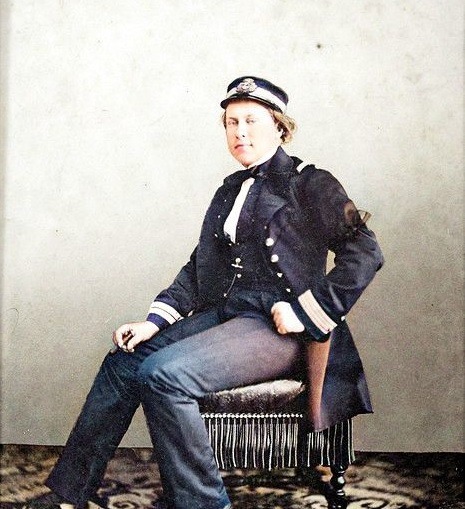
in the journey. Pedro V wrote the following regarding the wedding: "the wedding of my sister to Prince George of Saxony was celebrated with more pomp than happiness. The former is followed by a regretful fate, as he left no sympathies and people who met him often left with a poor impression."
The marriage was not a happy one, according to Historian Eduardo Nobre who claims that the Prince "did not live up to the expectations and qualities of the Portuguese Infanta". Despite their issues, they had eight children.
Although she renounced her claims to the Portuguese throne when she married, Maria Ana could still become Queen if the male line became extinct. This situation nearly happened in 1861, when King Pedro V and two of her other brothers died from Typhoid Fever and left no children. However, this hypothesis was completely put aside when her brother, King Luís I, married Princess Maria Pia of Savoy
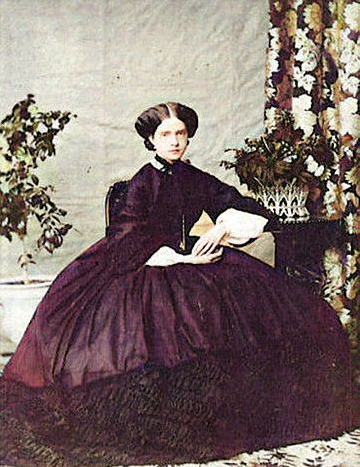
and had two sons, the future King Carlos I

and Infante Afonso.
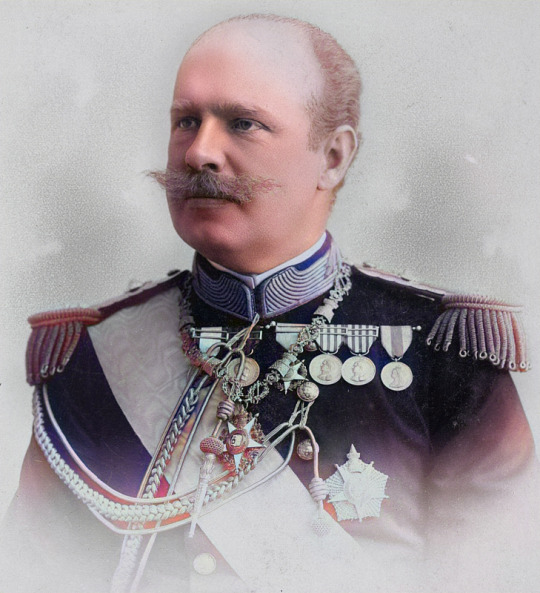
Despite everything, it's not likely that Maria Ana ever gave this hypothesis great importance because of her troubled marriage and many children.
Around 1883, her youngest son, Prince Albert of Saxony,

became seriously ill. Maria Ana took care of him for several months until he recovered. This effort would be fatal, as the Infanta died from exhaustion, on 5th February 1884, before her husband became King. Her husband would remain unmarried for the rest of his life.
In Portugal, her second brother Luís I soon succeeded her eldest brother Peter V as king.
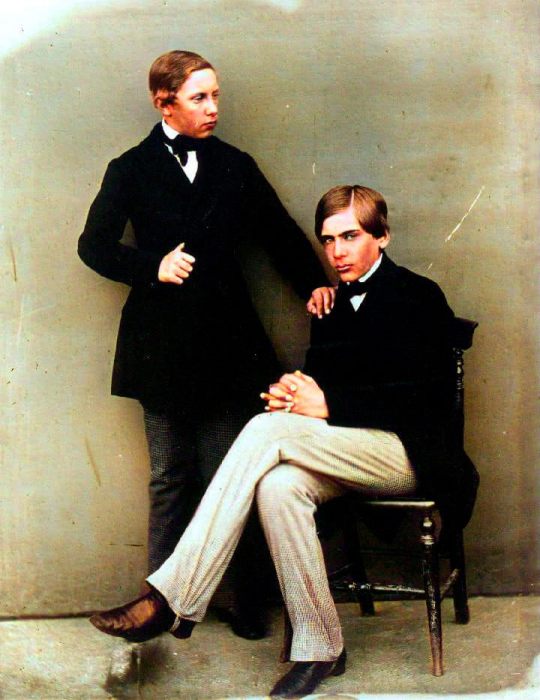
Her husband's elder brother Albert

succeeded her father-in-law as King of Saxony and gradually it became clear that he and his wife Carola of Vasa

were not able to have children of their own. Maria Ana's eldest son would almost certain to one day succeed to the throne.
Marie Johanna Amalie Ferdinande Antonie Luise Juliane, (19th June 1860 - 2nd March 1861), died in childhood, no issue
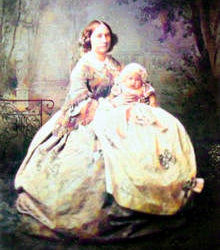
Elisabeth Albertine Karoline Sidonie Ferdinande Leopoldine Antonie Auguste Clementine (14th February 1862 - 18th May 1863) died in childhood, no issue
Mathilde Marie Auguste Viktorie Leopoldine Karoline Luise Franziska Josepha (19th March 1863 - 27th March 1933) died unmarried, no issue
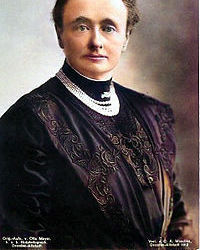
Frederick Augustus Johann Ludwig Karl Gustav Gregor Philipp (25th May 1865 - 18th February 1932)

married Princess Louise of Tuscany (1870–1947),
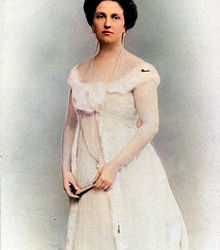
later divorced, had issue
Maria Josepha Luise Philippine Elisabeth Pia Angelica Margarethe (31st May 1867 - 28th May 1944)

married to her cousin second degrees Archduke Otto Franz of Austria (1865–1906),
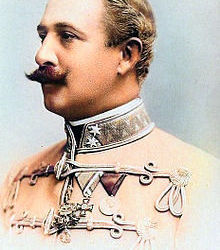
had issue
Johann Georg Pius Karl Leopold Maria Januarius Anacletus (10th July 1869 - 24th November 1938) married first Duchess Maria Isabella of Württemberg (1871–1904) and second Princess Maria Immaculata of Bourbon-Two Sicilies (1874–1906)

Maximilian Wilhelm August Albert Karl Gregor Odo (17th November 1870 - 12th January 1951) ordained as a priest, died unmarried, no issue
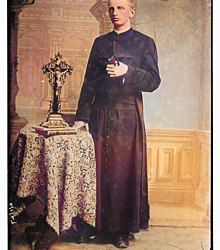
Albert Karl Anton Ludwig Wilhelm Viktor (25th February 1875 - 16 September 1900) died unmarried, no issue.

Princess Maria Ana predeceased her father Fernando, her husband George, and her brother-in-law King Albert of Saxony. In 1902 George succeeded his childless brother as king, and on his death in 1904 Maria Ana's eldest son became King of Saxony as Frederick Augustus III.
#infanta maria ana de bragança#house of bragança#queen maria ii of portugal#king consort fernando ii#king pedro v of portugal
11 notes
·
View notes
Photo
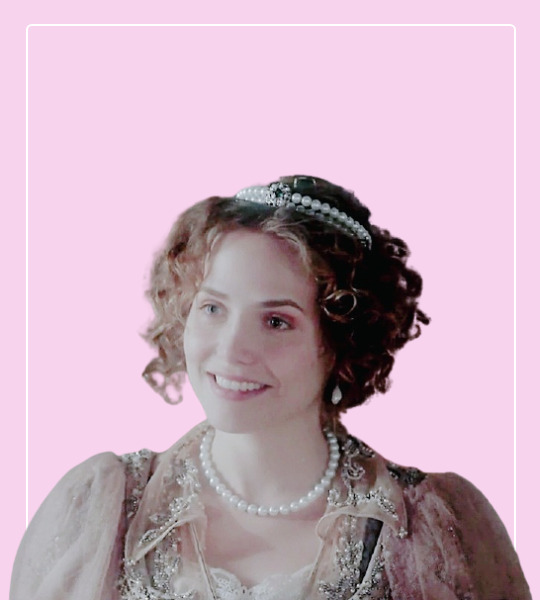
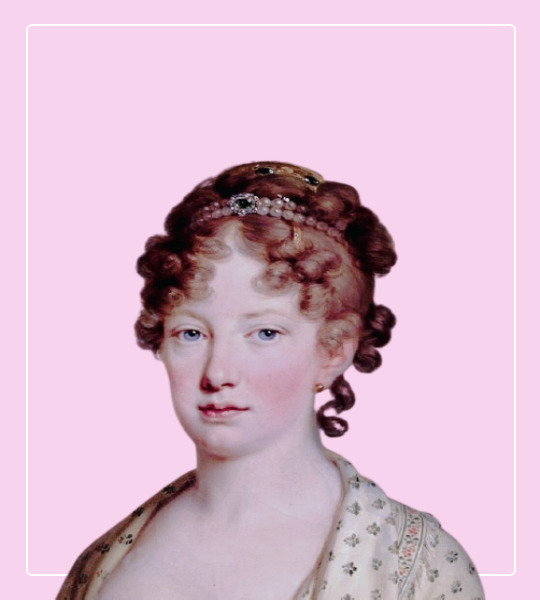
♕ JANUARY 22, 1797 – BIRTH OF MARIA LEOPOLDINA OF AUSTRIA, EMPRESS OF BRAZIL
Dona Maria Leopoldina of Austria (22 January 1797 – 11 December 1826) was born Caroline Josepha Leopoldine Franziska Ferdinanda of Habsburg-Lorraine at the Hofburg Palace in Vienna, Austria, Holy Roman Empire. She was the daughter of Holy Roman Emperor Franz II and Empress Maria Theresa of Naples and Sicily and among her siblings were Emperor Ferdinand I of Austria and Marie Louise of Austria, Empress of the French, the wife of Napoleon Bonaparte. In 1817 the Archduchess married Prince Dom Pedro of Braganza, heir to Portugal, later the Emperor Dom Pedro I of Brazil and King Dom Pedro IV of Portugal. The couple had 7 children: Queen Maria II of Portugal, Miguel, Prince of Beira, João Carlos, Prince of Beira, Princess Januária of Brazil, Princess Paula of Brazil, Princess Francisca of Brazil and Emperor Dom Pedro II of Brazil. During her time in Brazil Leopoldina gave advice to Dom Pedro in important political decisions that reflected in the future of the nation, such as the Dia do Fico and the subsequent opposition and disobedience to the Portuguese Cortes. She was one of the main articulators of the process of Independence of Brazil that took place between 1821 and 1822. On September 2, 1822 while she was the Acting Princess Regent of the Kingdom of Brazil in the absence of her husband Maria Leopoldina received a decree from Portugal that overturned the Brazilian government and demanded the immediate return of Pedro and his family to Lisbon. She summons the Council of State and signs on the same day the Decree of Independence, declaring Brazil separate from Portugal. Leopoldina send her husband the news, along with a letter urging him to proclaim the independence. On September 7, 1822 the letter reached Dom Pedro and he declared the independence of Brazil.
In 1826 Maria Leopoldina became Queen Consort of Portugal during her husband's brief reign as King Dom Pedro IV. Despite being usually remembered as a melancholic and humiliated woman by the extramarital affairs of Pedro I Leopoldina achieved much more. She had great influence in Brazilian politics and the respect and admiration of Brazilians, particurlarly of the poor and her popularity was even larger than that of Pedro. She died at age 29 on December 11, 1826 after a miscarriage. Maria Leopoldina was the first woman to govern an independent Brazil, the first empress consort of the country, the first empress of the Americas and the first woman to govern an independent American country.
Letícia Colin as Princess Maria Leopoldina of Austria, the Empress Consort of Brazil, Queen Consort of Portugal and Archduchess of Austria in “Novo Mundo” (2017). | Portrait of Maria Leopoldina - Archduchess of Austria by Joseph Kreutzinger.
#maria leopoldina#maria leopoldina of austria#novo mundo#perioddramaedit#historyedit#women in history#weloveperioddrama#historicwomendaily#perioddramasource#braziliansource#onlyperioddramas#empress maria leopoldina#brazil#brasil#history#brazilian history#mine#mine: edit#mine: novo mundo#mine: maria leopoldina#mine: novela#mine: brazilian tv#novela#brazilian novela#brazilian tv#brazilian stuff#novela brasileira#ce: 19th century#de: 1820s
66 notes
·
View notes